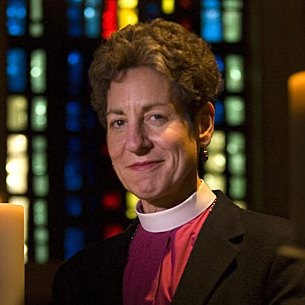14 May 2011
The Most Rev. Katharine Jefferts Schori
Presiding Bishop and Primate
The Episcopal Church
Should we feast or fast? These words of Jesus are an icon of the typical struggles in religious communities over the law, and what kind and level of observance is necessary. Do we believe in grace, or do we see the world as a grim and joyless place, and God as a deity to be appeased? There are definitely times for fasting, but when you see Jesus, he urges us to break out the best wine and share it, set the table with abundance, and invite the neighbors and anyone whoâs wandering by on the street.
I spent my first year of seminary commuting to a Roman Catholic seminary an hour away from my home. Itâs connected to a Benedictine abbey in the United States, founded by monks from Engelberg, Switzerland. Each day I ate a meal with the other students in the refectory. The culture was fairly solemn, maybe even dour, although you could find a fair bit of passion in classroom discussions.
Mount Angelâs refectory did a good job of recognizing feast days, particularly during Lent. Lunch was a whole lot simpler during the great 40 days â good but plain and meatless fare, without dessert. That is, until the feast of St. Joseph came along. Then we had prime rib and Napoleons for dessert. The shape of Lent was clearly about fasting, but it made room for celebrating a major feast. Benedictines know a great deal about welcoming the stranger. The feast itself was an invitation to discover Jesus in our midst, even in the depths of Lent
Celebrating the presence of the bridegroom is sacramental â itâs an outward recognition of oneâs inner joy of recognizing the host. Feasting in the midst of a fast is a reminder that ultimately we are made for abundant life at Godâs table. You and I are asked to bring the wine for the feast â God gives the gift of grapes, but we have to participate in the fermenting.
These sacks of skin we walk around in are wineskins â yet not new or old simply by virtue of years. Like Ezekielâs dry bones, wineskins need yeasty breath and spirit to be creative. In Jesusâ day, the juice of pressed grapes was poured into a new goat skin to ferment. The opening was tied off, and the fermenting wine stretched and expanded that skin as the yeast did its work. When the wine was ready to drink, the sugar had been turned to alcohol and CO2, and the skin had been stretched beyond recovery. A wineskin canât be reused for a brand-new fermentation.
Wineskins have to be continually renewed in order to be productive. If we are going to be lively partners in Godâs invitation to the feast, weâre faced with the challenge of changing the old skin for a new one that can again stretch and expand. Thatâs one of the uses of fasting â letting go of the dead and dying within us, both individually and as a community. Jesusâ invitation is always to that dying and rising, in order to be able to enjoy the feast. That sacramental reality is part of our missional challenge.
The body of Christ is also like a living wineskin, or a cellar full of wineskins. Different harvests, from different vineyards, all contribute to the feast. Fresh wineskins are continually needed.
Fresh wineskins challenge us. We donât trust the capacity of those new ones â we find it hard to believe that the tattooed and pierced, the immigrant, or aimless children, or cultured despisers of religion can make good wine. We resist new and changing language, images, and music in the wineskin we call the liturgy. Some of us struggle with the wineskins of mission. The forms change shape, but they also retain a focus on the kind of diaconal work Jesus did â feeding the hungry and healing the sick, whether they are travelers on the road to Jericho or asylum seekers at Schiphol.
The old is always passing away, and we struggle with the letting go. Can our ecumenical wine-making contribute to the feast? Can we try a new skin and suspend judgment until the wine is ready to drink? Are we willing to mix grapes from different fields?
We will never produce exactly the same wine twice.
When we can recognize that the spirit is still at work, can we suspend judgment and live in trust while the wine ferments and ages? Judging too soon is like opening the skin before the fermentation is finished. Either weâre going to contaminate the must or stop the fermentation prematurely, and weâll more likely get vinegar than well-aged wine.
Weâre invited to the feast â to join in producing the feast, and to enjoy what is contributed by the other guests. The only real question is whether weâre willing to keep letting the skin of our hearts be renewed. Come to the feast. Bring what you have and who you are, and ask for a new skin. The winemaker will provide the yeast.
